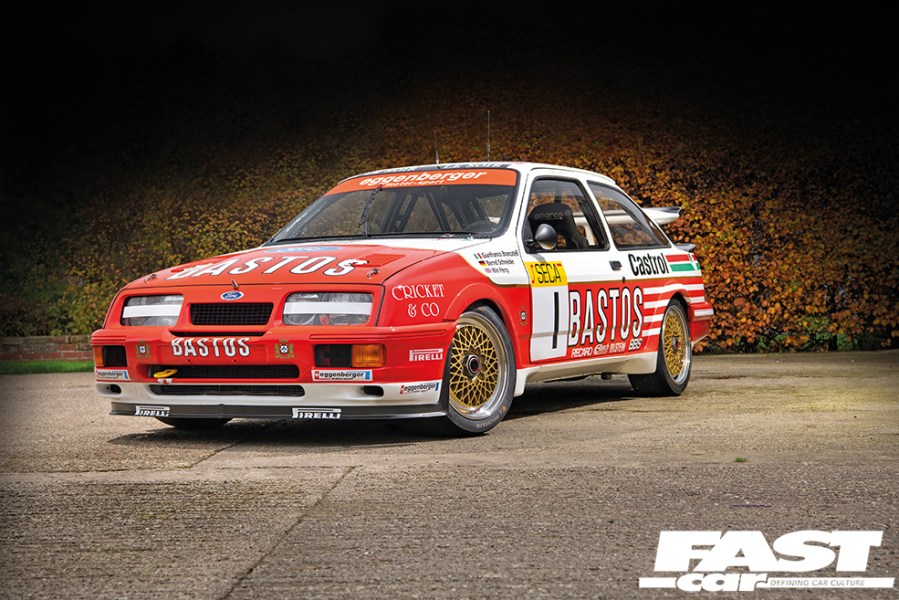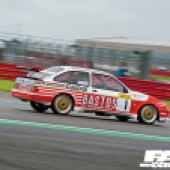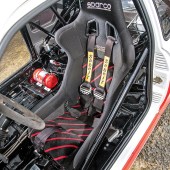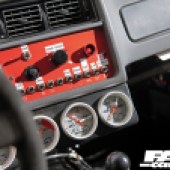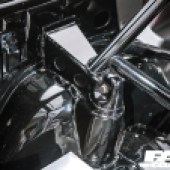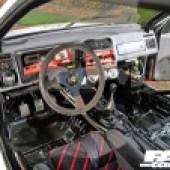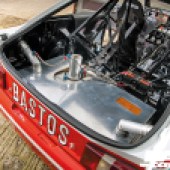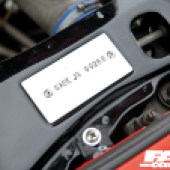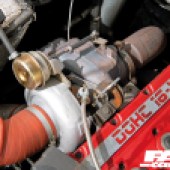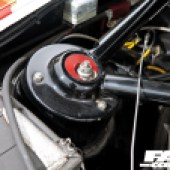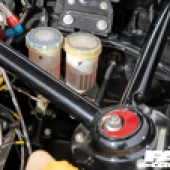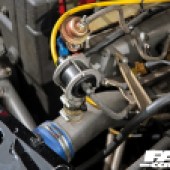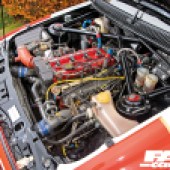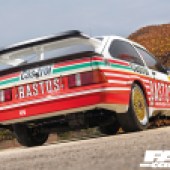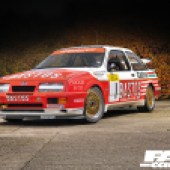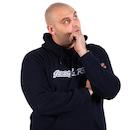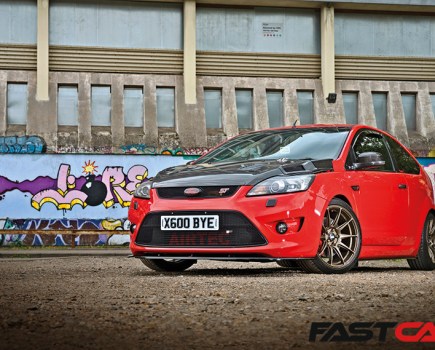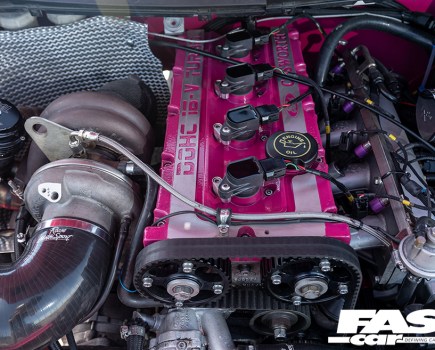This legendary Ford Sierra RS500 Cosworth won the gruelling Spa 24-hour race in 1989 sporting the famous Bastos colours. But there’s much more to the tale of this car than that…
Feature from Fast Ford magazine. Photos: Ade Brannan.
Built by Eggenberger Motorsport to compete in the European Touring Car Championship in the iconic Texaco colours, this legendary Ford Sierra RS500 Cosworth then went on to win the gruelling Spa 24-hour race 1989. But its incredible achievements on track only tell half the story of this car; the tale since it was retired from official works Group A duties is just as interesting (and, at times, just as bizarre) as any that retell its time from the paddocks in the late Eighties.
To help us untangle the tale we called on the help of Ford Sierra RS500 Cosworth guru and friend of Fast Ford, Paul Linfoot. Paul’s the go-to man when it comes to anything RS500, and even more so when it comes this particular car… Because he now owns it.
But how and when Paul came to become personally involved with the car comes later in the story. For now, let’s start at the beginning.
Paul explains, “Eggenberger Motorsport built six official works cars that would run in the Texaco colours in 1987 and 1988. These has the chassis numbers 99261 to 99263 (the 1987 WTCC cars) and 99267 to 99269 (the 1988 ETCC cars).”
Anecdotally, Paul also explains the missing three chassis numbers ’64, ’65, and ’66 were: Grab Motorsport’s Speedware-livery car (that Klaus Ludwig won the championship in), a Ringshausen-prepared Texaco car, and the Ringshausen Lui-sponsored car – all competing in the DTM series in 1988.
“The story gets complicated if we start to factor them all in, though, so for this one we’ll just concentrate on the six Texaco-liveried Eggenberger-built cars that ran in 1987 and 1988,” says Paul.
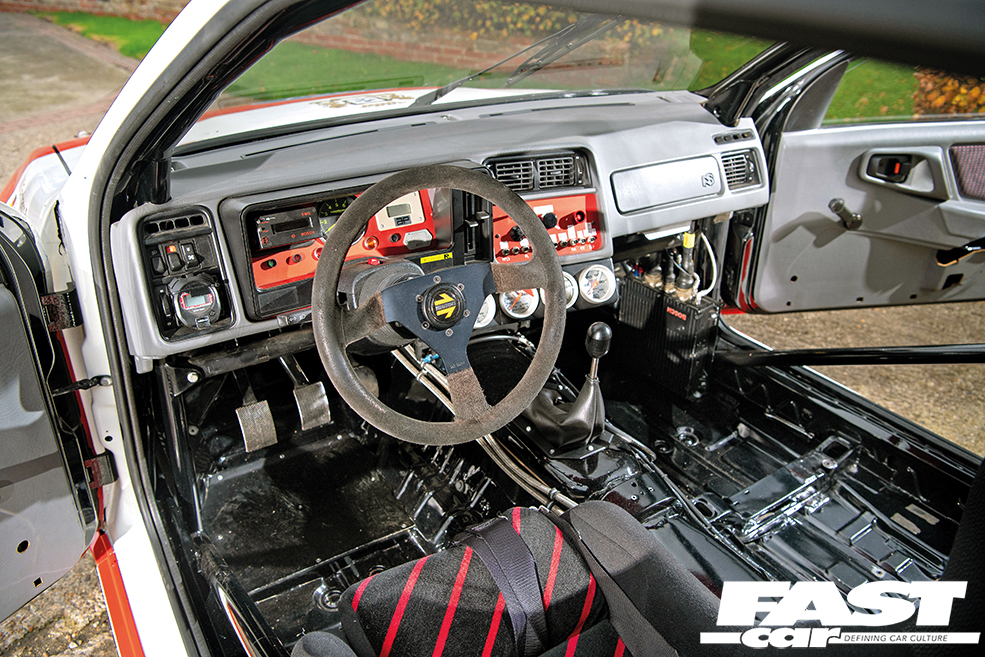
Born in the Eighties
This car you see on these pages is chassis number 99268. Paul explains, “It was built for the 1988 season. We believe its first competitive race was in Monza at the opening round of the ’88 season, where it was driven by Klaus Niedzwiedz and Armin Hahne – Hahne drove for Wolf Racing later in 1988 but was called in to replace Klaus Ludwig at the opening round after the German found himself snowed-in at a ski resort in the Swiss Alps.
“With the help of my friend and fellow RS500 fanatic Roy Diederen, we’ve been able to identify which drivers raced which chassis by looking at period photographs and recognising subtle differences between the cars. As such, we now believe this car was driven by Armin Hahne, Klaus Niedzwiedz, Klaus Ludwig, Steve Soper, Pierre Dieudonné, Gianfranco Brancatelli and Didier Theys during the 1988 season.”
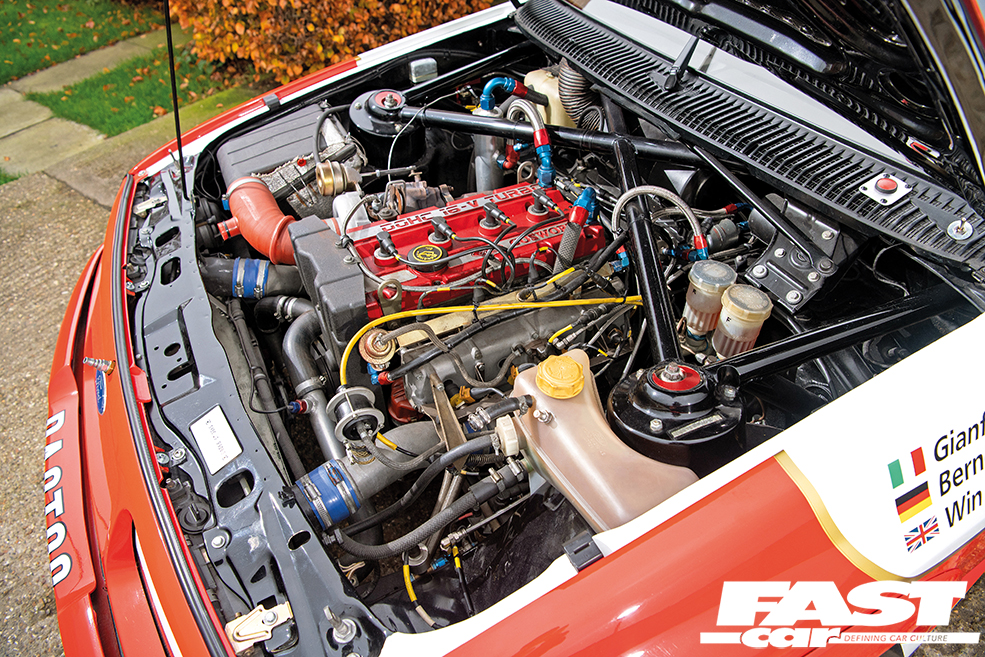
While it was driven by several greats throughout ’88, it was most frequently used by Soper and Dieudonné, and was part of some epic battles throughout the course of the season. One of which was the Silverstone Tourist Trophy, which saw the RS500 powerhouses of Andy Rouse, Dick Johnson, and Eggenberger all do battle on the same track at the same time; Soper and Dieudonné finished second in this car.
Fast forward to 1989, and just like the World Touring Car Championship had been cancelled at the end of 1987, the FIA pulled the plug on the ETCC at the end of 1988, citing spiralling costs of the evolution special models such as the BMW M3 Evo and, of course, Sierra RS500 Cosworth as the reason; urban legend has it that the sport’s organisers were bowing to pressure from other manufacturers to ban the all-conquering Fords, or they would walk away from the sport and splash their cash elsewhere.
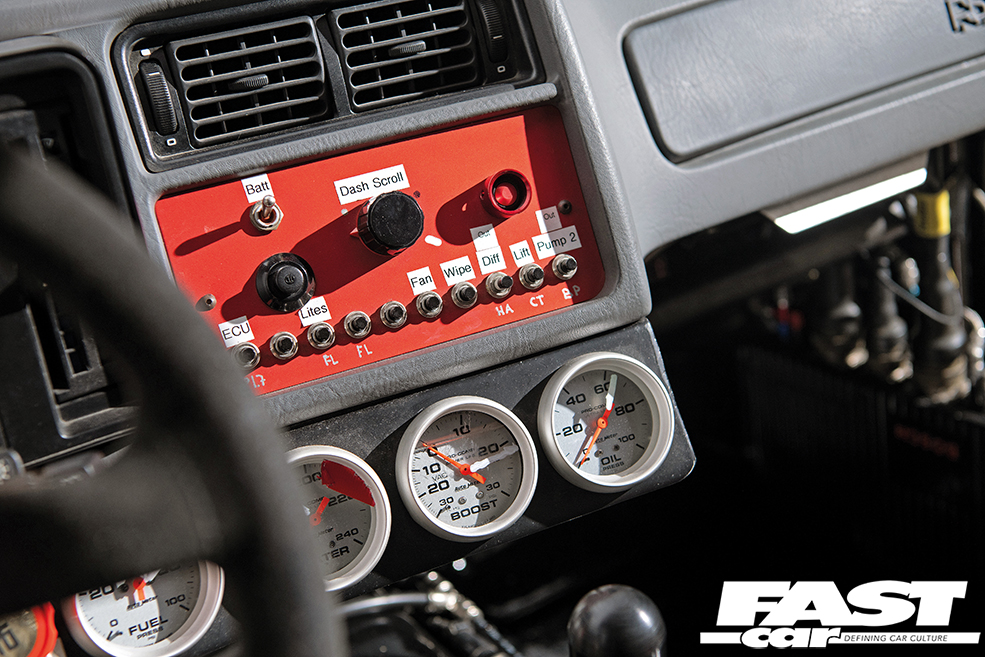
New role
Therefore, chassis 99268 was used in the German national DTM series for the 1989 season, before being outlawed from that in 1990. But with the RS500s slowly being banished from all the major Touring Car championships, Eggenberger looked to use the cars in high-status 24-hour endurance events. The team entered the Nürburgring 24-hour race in 1987 and won, the first time a turbocharged car had won the event.
In 1988 the team returned, looking to do the double, and chassis 99268 was one of the cars chosen. Unfortunately, it was forced to retire from that event but that was not to be the end of this car’s endurance adventures; it returned to the Nürburgring in 1989, this time wearing traditional Ford Motorsport blue-and-white livery, where it came third overall in the hands of Gianfranco Brancatelli, Alain Ferté and Thomas Lindström.
Winner!
But better was yet to come. A few weeks later, Eggenberger entered the Ford Sierra RS500 Cosworth in the Spa 24-hours race, where it was driven by Brancatelli, Bernd Schneider and Win Percy, and raced in the famous Bastos livery.
Paul explains, “Because the car was mostly driven by Soper and Dieudonné throughout 1988, and their driving styles were said to be kinder on the car, Rudi Eggenberger personally selected this car for events like the Spa 24-hours.”
Paul goes on to recount a myth that says Bastos wanted two completely new builds for the event, but Eggenberger only built one (which, according to the legend, was originally intended for a private customer but was cancelled at the last minute so the shell could be used for the second Bastos entry to Spa 24-hour), and recommissioned chassis 99268 for the event.
Looking resplendent in its new livery, Bastos bosses would never know that their ‘new’ car was in fact last year’s ETCC contender revamped. Mind you, they wouldn’t have cared either – not when it went on to win the race, becoming not only the first RS500 to do so, but also the first turbocharged car to win the Spa 24-hours.
No longer being eligible for DTM in 1990, the history gets quite vague as to which races the car competed in during 1990.
“One event we do know about is the Spa 24-hours in 1990,” Paul says. Eggenberger wanted to use this car again, and again the choice proved fruitful; it may not have reached the highs of the previous year, but a third place overall for Roland Asch, Frank Biela and Lindström was certainly no mean feat; they still won their (Group A) class too.
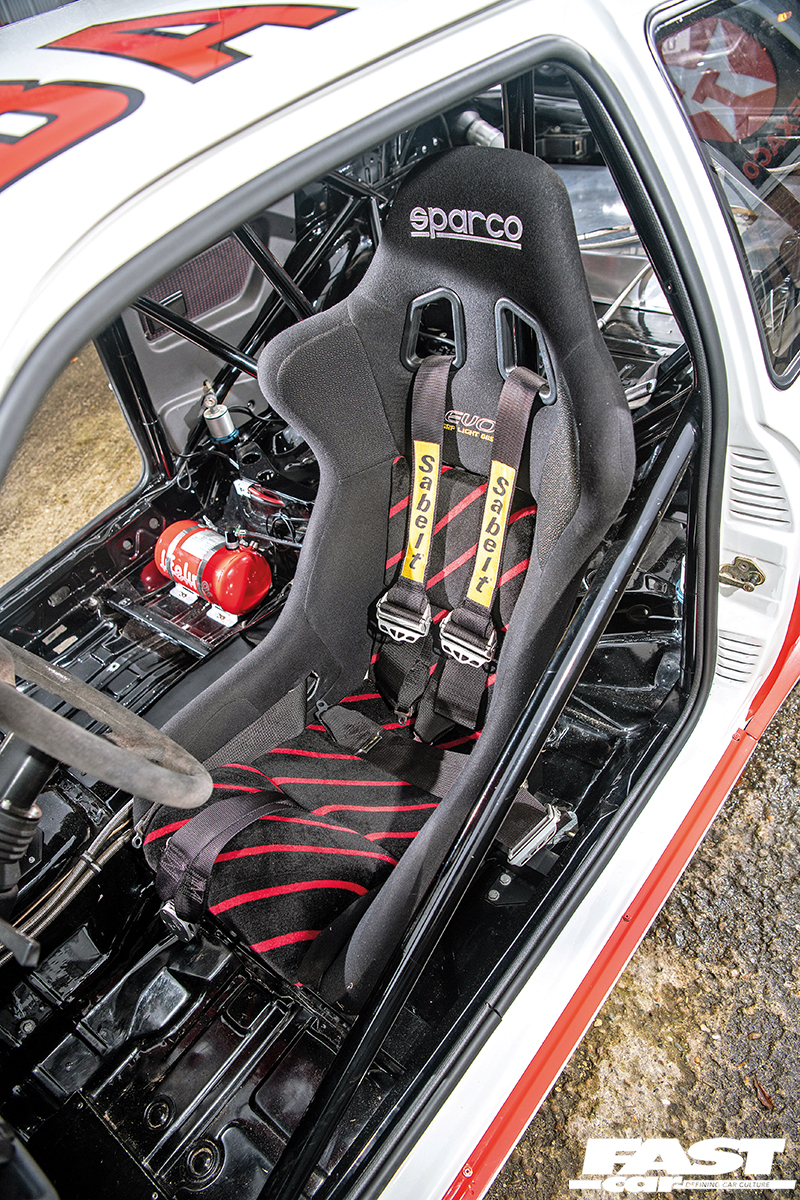
Retirement Age
After that, Eggenberger retired the car from competitive racing, and for many years it stayed in Rudi Eggenberger’s personal collection at his home in Switzerland.
Paul says, “At the time, he said he’d never sell it. He wanted to keep this one as it was the first one to win at Spa, and I think he always had a soft spot for this particular car above all the others.”
It wasn’t until a divorce many years later that the car emerged from Rudi’s private collection; it was sold off with its complete spares package in 2006 and was later used in hillclimb events. Thankfully, it was only used in a handful of races, and wasn’t subject to any modification or upgrade.
“Luckily it ran exactly as it was when it left Rudi’s,” explains Paul. “It even entered the hillclimbs still in the Bastos livery.”
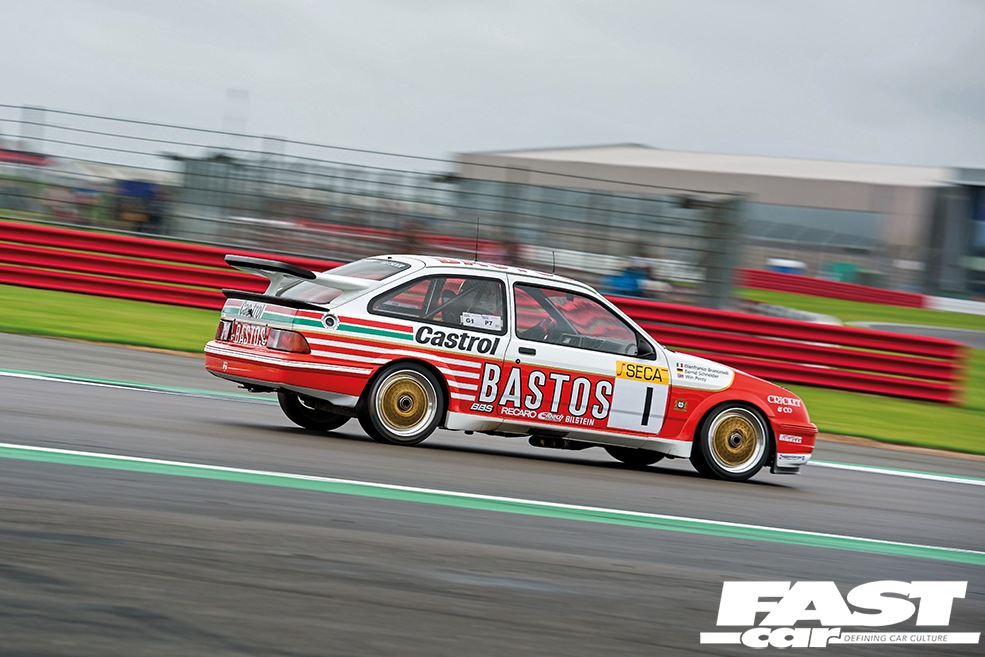
Back in action
A few years after, in 2015, a former Eggenberger mechanic bought the car and set about restoring it to its 1989 Spa-winning glory. Fully refreshed, it was then offered for sale complete with the original spares package, which was bought by Peter Sturgeon over in New Zealand. In 2016 the car then found itself on the other side of the globe, but not wanting to hide such an illustrious piece of motorsport history away forever, Peter arranged for the car to compete in prestigious events such as the Silverstone Classic, Oulton Park Gold Cup and Nürburgring Classic.
Not only did the car compete, but Peter successfully reunited it with period drivers such as Gianfranco Brancatelli (who drove the car to victory at Spa in 1989) and Eggenberger team boss, Rudi Eggenberger. And it was at one of these meetings where Paul’s involvement with the car stepped up a notch.
He adds, “Obviously I’d always known about the car, and was lucky enough to have met Peter, Rudi and Gianfranco, and even help them work on the car at race meetings. But at the Oulton Park Gold Cup race in 2017, I was about to get the opportunity of a lifetime; Gianfranco had to rush back to Italy for a family emergency, and Peter asked if I would like to drive the car in the race.”
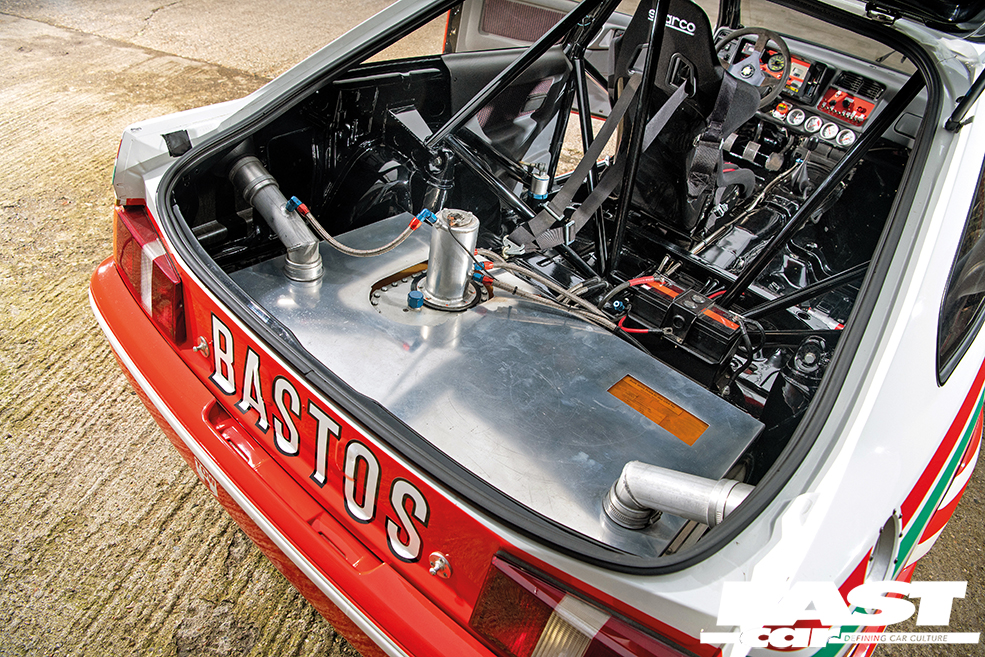
Ford Sierra RS500 Cosworth – Living the dream
Paul continues, “I was gob-smacked, nervous and excited all at the same time. But it wasn’t something I could pass up. When I was called in to pit, Peter and Rudi were laughing and asked ‘were you having fun out there?’ When I replied ‘yes’ they just giggled and told me they had been trying to call me in for the last seven laps… I was concentrating so much that I never saw the pit board.
“I tell you what though: coming down the pit lane and seeing Rudi Eggenberger waving me into the pit box was surreal. This man was my hero, and here I was driving one of the most famous cars he’s ever built while he was crew chief in the pits.”
Sadly, Rudi passed away the following year, which technically makes Paul the last man ever to race an RS500 for Rudi Eggenberger, and he has only fond memories of the man he admired. Rudi was a quiet man, but once you got to know him, he enjoyed a laugh and practical joke, and was an entertaining character. It was clear there was mutual respect between them, as Paul recounts: “I’ll never forget that he mentioned he thought we should build a car together; I’d helped repair the door panel after Gianfranco had a bit of a bump in it, and Rudi said, ‘we should build one together – I’ll do the engine and you do the body’.” High praise indeed.
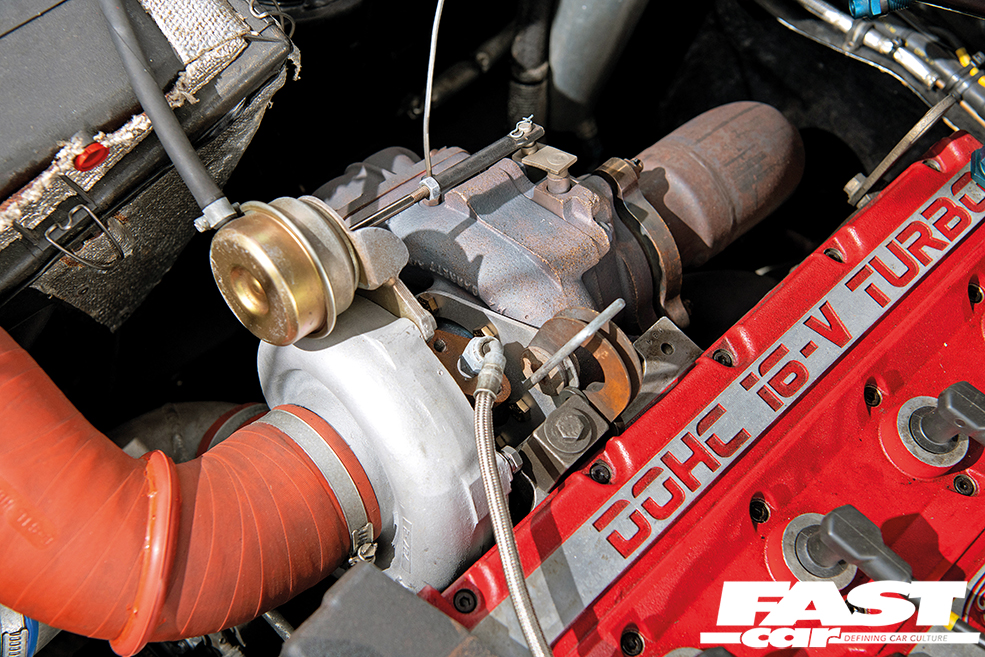
Not the end
Then the story takes a final twist. In 2020 Paul was offered the chance to buy the car, but the spares package had been sold to Dick Johnson Racing in Australia.
Paul smiles, “DJR was planning to build two new cars – what would become DJR 7 and DJR 8 – and wanted to use the spare shell and spares package to build up one of the cars. Incidentally, the other car would be based on converting an old promotional car that was living in a museum in Australia, but we’ll come on to that a bit later.”
But things change quickly in the word of motorsport; the man who had intended to build DJR 7 and 8 (the then-DJR team principal, Ryan Story) bought the DJR team from Roger Penske at the end of 2020. So, plans to build DJR 7 and 8 were abandoned so Story could concentrate his efforts (and funds) on the V8 Supercar championship in Australia.
Last year, Paul received a call from Story asking if he wanted to buy the spares package, so now the Bastos car has been reunited with its Eggenberger spares too.
But the story has one final development. Paul explains, “Ryan is too busy to build the new RS500s he had hopes for, but he is still keen to see DJR 7 get built. After chatting about it, he then asked me if I would be interested in building the car on his behalf. Of course, I said yes, and it wasn’t long before the promotional car was in a container and on its way to the UK. My next big project is to build RS500 chassis DJR 7 for Dick Johnson Racing.”
And, given that Paul also owns DJR 1 – the very first car built by Dick Johnson – that’s a rather fitting end that particular tale.
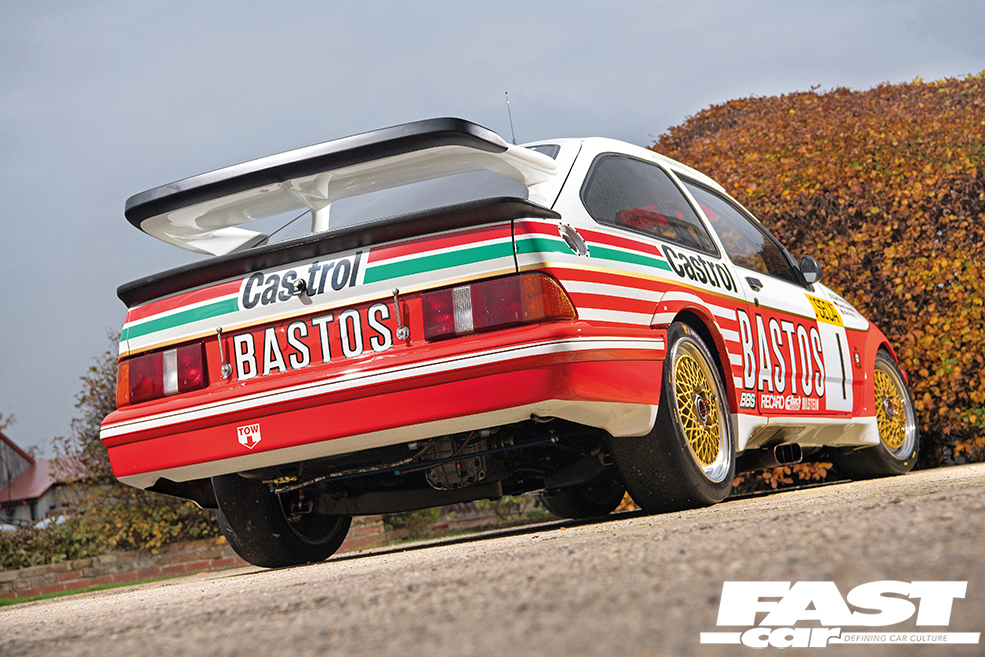
What’s next for the Ford Sierra RS500 Cosworth?
But what about the Spa-winning car? What are the plans for it? Paul says, “At the moment I just want to use it for demonstrations and show the car off at events throughout the year, but I don’t have any plans to enter it into any more competitive races.”
But given the company Paul keeps includes household names such as Steve Soper, Klaus Niedzwiedz, Gianfranco Brancatelli and Karl Jones, we would suggest a never-say-never caveat is applied to Paul’s last statement.
If you want to see this car in person, then head to Ford Fair at Silverstone on 14 August, where Paul is planning to showcase the car as part of the Fast Ford stand. It’s a true piece of motorsport history, and not to be missed.
Tech Spec: Ford Sierra RS500 Cosworth
Engine:
1993cc YBD, Eggenberger-spec Group A engine, RS500 205 ‘small core plug’ block, original rods and crank, Eggenberger-spec pistons, RS500 inlet with twin fuel rails but only running four Porsche 1200cc injectors (four ‘yellow’ Bosch injectors fitted in second fuel rail but not active), ported head to Group A regs, original valve sizes, Eggenberger-spec cams, side-exit exhaust, RS500 intercooler, twin engine oil coolers, Bosch 1.7 ECU with Eggenberger mapping, adjustable boost switch hidden behind ECU cover on dash, full copper wiring loom.
Power:
480bhp in race spec (560bhp in qualifying trim)
Transmission:
Group A-spec Getrag five- speed with dog-leg first gear, Eggenberger-spec 7.5in ZF rear diff with spool, Group A two-piece propshaft and Group A driveshafts, cable-operated paddle clutch
Suspension:
Front: Bilstein Group A dampers with Eibach springs, Eggenberger-spec uprights and spindles (different from Rouse-spec), compression struts, adjustable TCAs, Eggenberger (non-bladed) steel front anti-roll bar, Eggenberger top mounts, non-power steering quick-ratio steering rack with Eggenberger-modified steering arms; rear: solid-mounted modified beam, Eggenberger-spec aluminium rear arms, Eggenberger spindles, Bilstein dampers with Eibach springs, Group A-spec anti-roll bar; fully rose-jointed throughout
Brakes:
Front: 330x32mm two-piece discs, AP Racing four-pot callipers; rear: 315x28mm vented discs, AP Racing four-pot callipers; bias pedal box with in-car adjuster, braided flexis
Wheels & tyres:
9.0x17in BBS split-rims all round, centre-lock wheel nuts, with Michelin 24/61-17 slick tyres
Exterior:
RS500 Group A shell, air jacks, full FIA-spec safety equipment, twin roof aerials for endurance racing, ran in Texaco livery in 1988 and Ford Motorsport/Borbet/Bastos livery in 1989 (currently in refreshed 1989 Bastos livery)
Interior:
RS500 motorsport shell, Sparco in-date race seat (original was carbon Recaro seat), in-date Sabelt six-point harnesses, Matter Group A-spec multi-point weld-in steel roll cage, original Bosch VMG monitor, AP Racing brake bias digital display, Eggenberger rev counter, additional fuel/water/boost/oil gauges, brake bias adjuster, Lifeline plumbed-in fire extinguisher system, 120-litre bag-type fuel tank, two Facet lift pumps, fuel swirl pot, two Bosch 044 fuel pumps, braided fuel lines, motorsport battery

